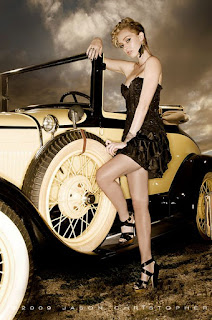6 Useful Fashion Photography Tips for Amateurs
Fashion photography, like any other genre of photography, is a work of art. People hardly want to know the secret behind captivating stills of glamorous divas that appear in various magazines. Many of them take the fashion photography industry casually, believing it’s a mere doll show.
Only if they knew the glam world is not at all what it seems and a fair amount of hard work is put by the photographers and models to keep the industry maintain its standard, they would’ve changed their opinion.
In the fashion industry, photographers not just shoot photos but also take care of other things like selecting an appropriate DSLR camera, finding an opposite angle, looking after the background decoration and even guiding the models so they stand, sit or lie in the perfect pose.
Fashion photography, henceforth, is not everyone’s cup of tea. If you want to shine in this industry but lack the relevant experience, here are a few tips for you to try before going into the professional fashion photography.
6 fashion photography tips for amateurs
Tip {1} – Develop the Concept
Fashion photography is not just about taking random photo of models posing. You should have a concept or theme before you start.You need to spend time to develop a concept that would show creativity and uniqueness. Development of such concepts takes time. You should be open to ideas and suggestions; group meetings and resulting interactions may help generate new ideas. The concept should be thought-provoking, but not something that viewers would find unfathomable. They should be able to apprehend its execution.
Tip {2} – Experiment with Camera Angles
Keep in mind there’s no such thing as best camera angle for a shot. Whether or not an angle is befitting, depends on the context of a shot. Fashion photographers normally use low viewpoint and low angles, low viewpoint with upward angle, eye level shots, high-angle shots, etc. They often move close, crawl on the floor and shoot from a slanting angle to add cool effects to the photograph. You need to experiment a lot with these angles to learn their importance in fashion photography.
Tip {3} – Select the Camera Carefully
This one’s very important. You need to switch between cameras to bring certain effects on the photos and capture certain convoluted atmospheres. For example, you need a 35mm format expensive DSLR to make sure clarity of photos with incredibly low noise factors. With such a camera, you can flawlessly capture tangled clothing of a model in a labyrinthine backdrop.
If you want elongated recording time for a perfect shot, a DSLR camera with dual slots for SD card is what you need. Such cameras are not very expensive. They help capturing intricate details of the couture, which photographers often find challenging. You don’t have to dig deep into technicalities, but some of the specs that make a camera suitable for fashion photography are mentioned below.
- Superior Autofocus performance.
- Non-stop shooting at up to 7 frame per second.
- Dust and weather resistance (for outdoor sessions)
- Dual slots for CF and SD cards.
- Shutter speed at 30 to 1/8000 seconds.
- 100% Viewfinder coverage. This will help you to compose well.
Lighting reveals all the details of the couture while creating a mood at the same time. Photographers prefer shooting in studio apartments because they can control the lighting there. When shooting in ambient lighting, a photographer may use soft light which cast scattered shadows with soft edges. The light is normally handheld by photographer’s assistant at 6-8 feet right or left to the subject.
If it’s an indoor shot, for highlighting certain body parts of the model, the photographer may use a white beauty dish. The subject is considerably far from the dish and above her head so that soft glowing light falls on her body. Outdoor shooting is different because the lighting changes and is difficult to control. However, desired results are achieved using reflectors, and fill flash.
Tip {5} – Model Poses
A fashion photographer needs to know different model poses for various outputs. Understanding the various significance of model poses is not difficult. If you think the face of the model would look wider in the shot, tell her to tilt her face. This would help you avoid head-on shots. For a seductive photo, the model needs to stand slantingly so her hip and breast receive the camera’s gaze. These are some of the examples. You need to be creative and give the model instructions so her poses go in sync with your camera angles.
Tip {6} – Build a Portfolio
It is not just about following these tips and taking photographs. You need to build a portfolio showing your best work. Usually, amateurs don’t give much attention to this. I think maintaining a good portfolio would help you to develop your photography and in networking. For instance, if you want to join the industry, you have to approach professional photographers and they ask for your portfolio. And if you don’t have an impressive portfolio, you might miss an opportunity to getting into the industry. Another reason, for maintaining a good portfolio, is that you can work as a freelance fashion photographer, and can contact professional models to update your portfolio.
Once you begin with these six tips, keep tabs on the developments in the fashion industry, and constantly update yourself. Subscribe a good fashion magazine and study the photographs — the poses, lighting, framing etc. The industry follows the latest trends. So make sure your creativity and fashion photography skills are in agreement with the newest fads in the fashion circuit.







No comments:
Post a Comment